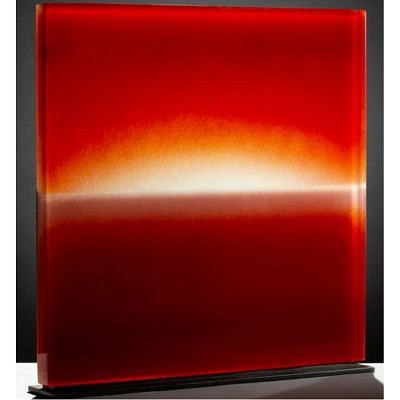Turner Engravings and Etchings 1812 - 1826, 1860
About Seller
522 South Pineapple Avenue
Sarasota, FL 34236
United States
Sarasota Estate Auction specializes in a wide variety of furniture, antiques, fine art, lighting, sculptures, and collectibles. Andrew Ford, owner and operator of the company, has a passion for finding the best pieces of art and antiques and sharing those finds with the Gulf Coast of Florida.
Two ways to bid:
- Leave a max absentee bid and the platform will bid on your behalf up to your maximum bid during the live auction.
- Bid live during the auction and your bids will be submitted real-time to the auctioneer.
Bid Increments
| Price | Bid Increment |
|---|---|
| $0 | $10 |
| $100 | $25 |
| $250 | $50 |
| $1,000 | $100 |
| $2,500 | $250 |
| $7,500 | $500 |
| $20,000 | $1,000 |
| $50,000 | $2,500 |
| $100,000 | $5,000 |
| $250,000 | $10,000 |
About Auction
Mar 23, 2024
Artists to include: Jorge Blanco, Julius Shulman, Salvador Dali, Picasso, LeRoy Neiman, Henry Moore, Darrell Crisp, Karel Appel, Matisse, Itzchak Tarkay, Kiyoshi Saito, Sharon Boysel, and others. There is also a Knoll Plattner Table, a lot of 7 Original Peanuts Drawings By Reuben Timmins, Rare Books, Art Glass Sculptures, Modern Design and Furniture, Photographs, a Large Collection of Estate Sterling, and so much more! Sarasota Estate Auction sarasotaestateauction@gmail.com
- Lot Description
These lots are based on the engravings and etchings of Joseph Mallord William Turner (1775 - 1851), an English Romantic painter, printmaker, and watercolorist who was known for his imaginative landscapes and turbulent, often violent marine paintings. He signed many of his works "J. M. B. Turner" and was perhaps the greatest landscape artist of the 19th century. He studied at the Royal Academy of Arts, hence you often see "R.A." after his name, and his works were exhibited there when he was just fifteen. He had a love for seaside towns- you can see that in his pieces here - and he was a controversial figure who never married, but had two daughters, he became pessimistic and morose after the death of his father in 1829, and Turner lived in squalor and poor health towards the end of his life. The engravings and etchings come from a two-volume set of books by Turner called Picturesque Views of the Southern Coast of England, published in 1826, and we sold both volumes at auction earlier this year. See The Engraved Work of J. M. W. Turner by William George Rawlinson (1840 - 1928), a silk merchant who catalogued the prints of Joseph Turner. In 1878 he published Turner's Liber Studiorum: A Description and a Catalogue, and the two-volume set The Engraved Work of J. M. W. Turner came out in 1908 and 1913. The lots follow Rawlinson's numbering system: there are seven lots altogether - five have four works by Turner in each lot, one has five, and the last lot has three works by Turner, for a total of 28 pieces by the famous artist, and "R111" mean "Rawlinson's catalogue number 111", which was a view of Torbay from Brixham etched by William B. Cooke. Willam Bernard Cooke (1778 - 1855) was an English line engraver who worked with his brother and fellow-engraver George Cooke (1781 - 1834) to complete many of the drawings for Turner's Picturesque Views of the Southern Coast of England, and when you see "W. B. Cooke" on the etchings and engravings, that stands for William B. Turner's paintings go anywhere from $10 to $47,000,000, depending on the size and medium of the artwork, so choose wisely and you may get a bargain here. The next lot of Turner engravings and etchings consists of R117 (Ramsgate, Kent), R118 (Hythe, Kent), R122 (an engraving of Brighthelmstone), and another R122 (an etching of Brighthelmstone). R117 is undated and untitled, but it is an engraving of Ramsgate in Kent probably done by Richard Wallis in 1824, accordant to the Tate Gallery. Turner's name does not appear under the plate, but the image was clearly drawn by him, and Richard Wallis's name does not appear under the plate either, but Richard Wallis was another engraver hired by W B Cooke to speed up the publication process - it was getting too much for Cooke to handle on his own. Ramsgate is a seaside town in east Kent, and its harbor had the distinction of being the only Royal Harbor in the United Kingdom: in 1820 King George IV set off from Ramsgate with the Royal Squadron headed to Hanover and was so impressed by the hospitality he received at the port that he decreed it to be a "Royal Harbour", a status unique on mainland Britain. Because of its proximity to mainland Europe, Ramsgate was also a chief embarkation point during the Napoleonic Wars and for the Dunkirk evacuation in 1940. The work reads "R117 Engraver's Proof Ramsgate" in pencil in the lower left margin and has no writing on the backside. The outer margins measure 10 3/8 x 14 1/2 in. wide and the image measures 6 x 9 1/2 in. wide, the image is clean, with a faint crease in the top right corner and faint brown spots in the margins on the front and backside. R118 is untitled, but is an engraving of Hythe in Kent, according to the Tate Gallery, and it depicts a military scene at Hythe. It reads " Drawn by J M W Turner R. A." under the plate on the lower left and "Engraved by George Cooke 1824" under the plate on the lower right, and it is inscribed "R118 Engravers Proof Hythe" in pencil in the lower left margin on the front and "Crook 1/2/30" on the backside. The outer margins measure 10 3/8 x 14 3/8 in. wide and the image measures 5 7/8 x 9 1/8 in. wide, with brown spots and darkening in the margins on the front and brown spots on the back. The first R122 is an engraving of Brighthelmstone, the old name for Brighton, a seaside resort south of London, and again you can see the turbulent waters in the harbor. It reads "Drawn by J M W Turner R. A." under the plate on the lower left and "Engraved by George Cooke 1825" under the plate on the lower right, with "R122" inscribed in pencil in the margin on the lower left and no writing on the backside. The margins measure 8 1/2 x 11 5/8 in. wide and the image is almost 6 x 9 in. wide, with a clean image, a small crease in the top left corner, and faint brown spots in the margins on the front. The second R122 is an etching of Brighthelmstone, aka Brighton, it reads "Drawn by J M W Turner R. A." under the plate on the lower left and "Etched by George Cooke 1825" under the plate on the lower right, with "R122" inscribed in pencil in the margin on the lower left and "Ham Jan 1930" in pencil on the backside. The margins measure 8 5/8 x 12 1/8 in. wide and the image is 6 x 9 in. wide. The image is clean, with a thin horizontal paper loss at the top margin, a small nick in the bottom margin, a ragged edge in the bottom right corner, and faint brown spots in the margins on the front and back. #5126 #5127 #5128 #5129 Location U4
- Shipping Info
-
SHIPPING INFORMATION·
Sarasota Estate Auction IS NOT RESPONSIBLE FOR SHIPPING! BUYER MUST ARRANGE SHIPPING. All shipping will be handled by the winning bidder. Sarasota Estate Auction recommends obtaining shipping quotes before bidding on any items in our auctions. To obtain a quote, please email info@premiershipment.com. Be sure to include the lot you are interested in and address you would like the quote for. Refunds are not offered under any circumstances base on shipping issues, this is up to the buyer to arrange this beforehand.
BIDDER MUST ARRANGE THEIR OWN SHIPPING. Although SEA will NOT arrange shipping for you, we do recommend our preferred shipper Premier Shipping & Crating at info@premiershipment.com You MUST email them, please DO NOT CALLl. If you'd like to compare shipping quotes or need more options, feel free to contact any local Sarasota shippers. You can email any one of the shippers below as well. Be sure to include the lot(s) you won and address you would like it shipped to. Brennan with The UPS Store #0089 - 941-413-5998 - Store0089@theupsstore.com AK with The UPS Store #2689 - 941-954-4575 - Store2689@theupsstore.com Steve with The UPS Store #4074 - 941-358-7022 - Store4074@theupsstore.com Everett with PakMail - 941-751-2070 - paktara266@gmail.com
-
- Payment & Auction Policies
-
Available payment options
We accept all major credit cards, wire transfers, money orders, checks and PayPal. Please give us a call at (941) 359-8700 or email us at SarasotaEstateAuction@gmail.com to take care of your payments.
-
- Buyer's Premium



 EUR
EUR CAD
CAD AUD
AUD GBP
GBP MXN
MXN HKD
HKD CNY
CNY MYR
MYR SEK
SEK SGD
SGD CHF
CHF THB
THB
























